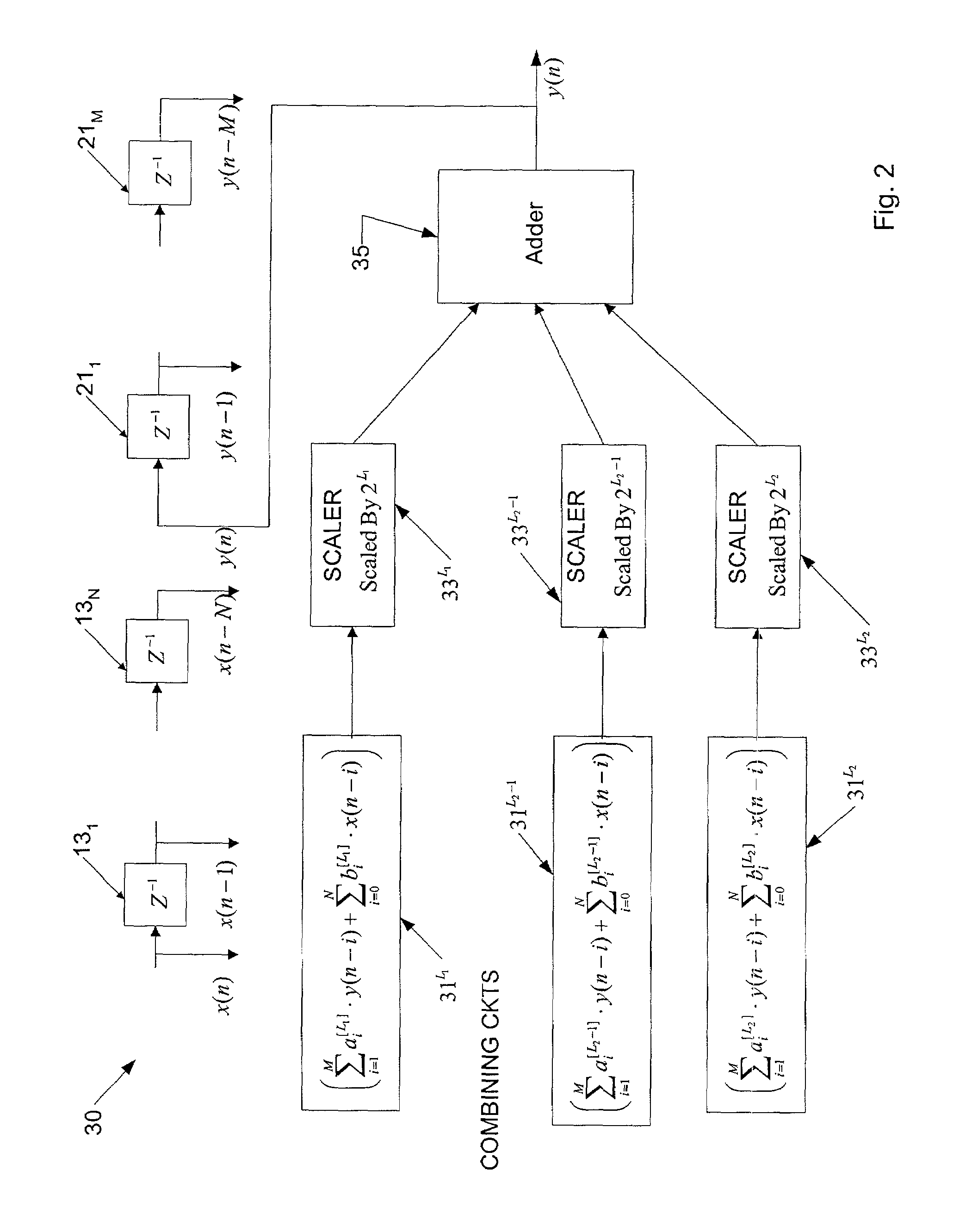Implementation of digital filter with reduced hardware
- Summary
- Abstract
- Description
- Claims
- Application Information
AI Technical Summary
Benefits of technology
Problems solved by technology
Method used
Image
Examples
Embodiment Construction
[0032]The present invention relates to an implementation of a digital filter, using selective combining of sample values and scaling of the combined values, to eliminate numeric multiplications, which otherwise might require fixed-point digital multiplications.
[0033]To appreciate the invention, and how it operates, it may be helpful to first consider the transfer function of a digital filter. As noted above, a digital filter function can be written in the following form: y(n)=∑l=1Mal·y(n-i)+∑l=0Nbl·x(n-i)(1)
[0034]In a fixed-point implementation of the digital filter, the coefficient values of ai and bi must be in or be converted approximately into the form of: ∑j=L1L2cj2j(2)
wherein L1 and L2 are two integers, such that:
2L2≧a1≧2L1, for i=1, . . . , M
2L2≧b1≧2L1, for i=1, . . . , N (3)
[0035]In the equation (2), cj=0 or 1, that is to say a binary 1 or 0 value. Hence, it is possible to eliminate the use of multipliers by using the 0 or 1 binary value and scaling by appropriat...
PUM
 Login to View More
Login to View More Abstract
Description
Claims
Application Information
 Login to View More
Login to View More - R&D
- Intellectual Property
- Life Sciences
- Materials
- Tech Scout
- Unparalleled Data Quality
- Higher Quality Content
- 60% Fewer Hallucinations
Browse by: Latest US Patents, China's latest patents, Technical Efficacy Thesaurus, Application Domain, Technology Topic, Popular Technical Reports.
© 2025 PatSnap. All rights reserved.Legal|Privacy policy|Modern Slavery Act Transparency Statement|Sitemap|About US| Contact US: help@patsnap.com



